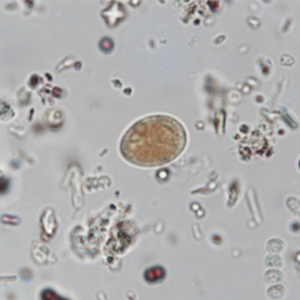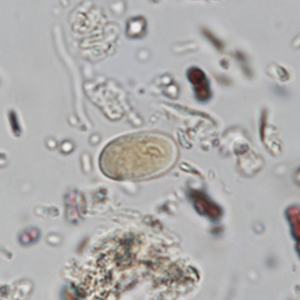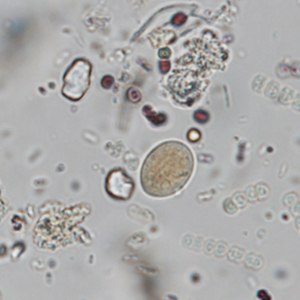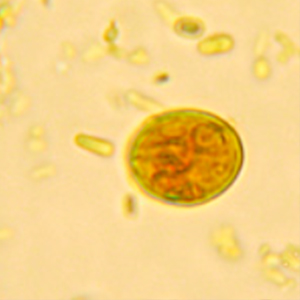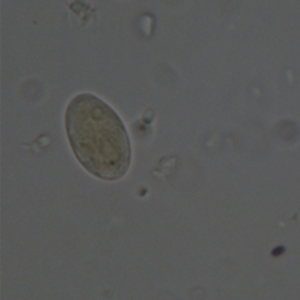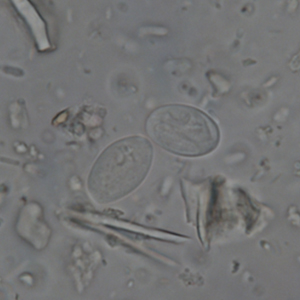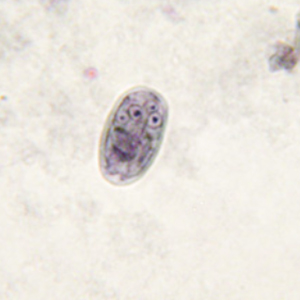Giardia intestinalis is a flagellate of the duodenum of a large number of species (domestic carnivores, production animals, rodents, birds, reptiles, and wild mammals including primates).
Epidemiology
Giardia intestinalis is a cosmopolitan parasite which can be found in both Old-World Monkeys (including Macaca fascicularis, Macaca mulatta, Rhinopithecus roxellanae) and New World Monkeys (including Saimiri spp. and marmosets like Callithrix spp.), as well as in Apes (Hylobatidae, Pan troglotydes, Gorilla spp., Pongo spp.). It is a zoonotic pathogen and transmission between animals and zoo personnel has been reported (Strait et al., 2012; Zhong et al, 2017; Köster et al., 2021; Menu et al., 2021).
Description
Giardia intestinalis cysts are oval, stain with Lugol and measure between 8 and 12 µm long. They have a thin outer membrane and contain two to four nuclei and many flagella (Strait et al., 2012).
Differential diagnosis
Differential diagnosis includes other protozoan cysts, namely small flagellates and amoebas. Differentiation is based on the number and morphology of the nuclei and the size of the cysts. Staining with iron hematoxylin can be useful to visualize intracytoplasmic details and facilitate diagnosis. A coproculture can allow the visualization of trophozoites, thus improving the diagnosis. ELISA serologies are also available in order to confirm infection (Strait et al, 2012).
Clinical significance
In most cases, infections by Giardia intestinalis remains asymptomatic both in humans and non-human primates. However, immunosuppression or a concomitant digestive affection can induce clinical signs, which range from diarrhea and abdominal pain to vomiting and nauseas.
Prophylaxis and treatment
As some genotypes of Giardia intestinalis are zoonotic, hygienic measures need to be taken in case of diagnosis.
Various treatments have been described in non-human primates:
- Quinacrine: 3.3 mg/kg q8h during 5 days showed 70 to 95% efficacy; however, this treatment is not well tolerated by squirrel monkeys (Saimiri sciureus), in which it causes gastrointestinal discomfort (Renquist & Whitney, 1987; Strait et al., 2012);
- Metronidazole: 10 to 17.7 mg/kg q8h during 5 to 10 days is efficient in all primate species (metronidazole benzoate should be preferred as it is more palatable, hence easing oral administration) (Strait et al., 2012);
- Albendazole: 25 mg/kg q12h during 3 to 5 days can be used in macaques (Strait et al, 2012);
- Furazolidone (1.5 mg/kg q24h during one week) or tinidazole (150 mg/kg q24h during 4 days and then 77 mg/kg q24h during 4 days) has also been used successfully in marmosets (Strait et al, 2012).
